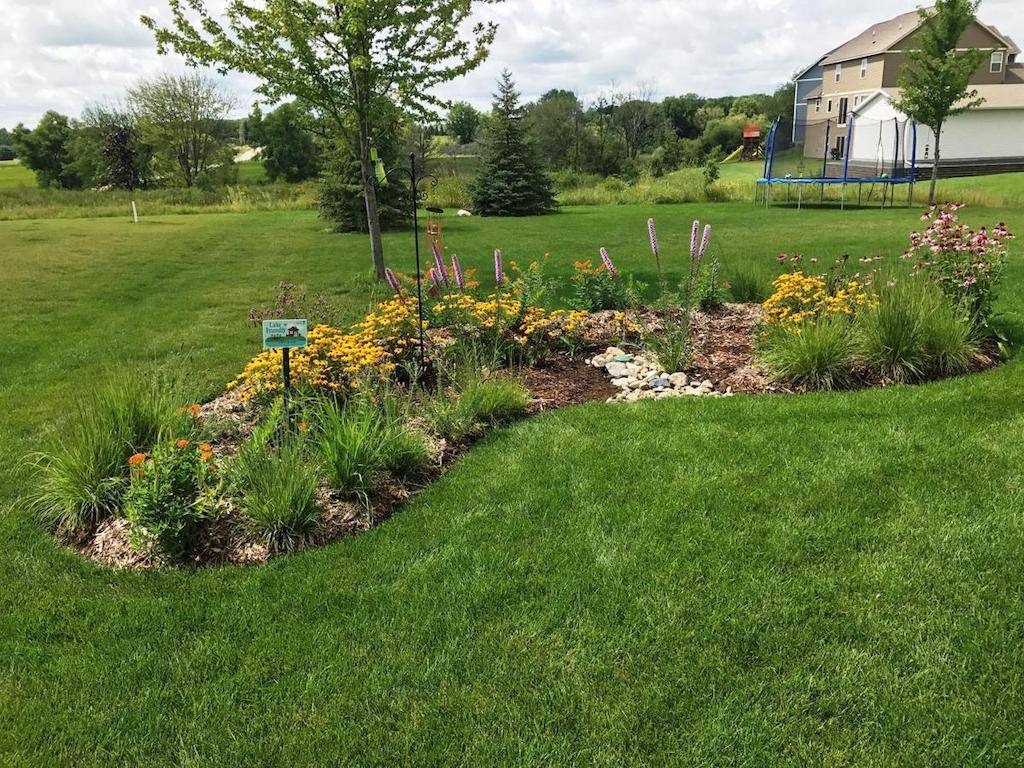
Rainwater and snowmelt slowly filter back through the earth in natural landscapes. This sluggish penetration replenishes groundwater while also filtering pollutants, improving water quality. A rain garden in your yard can help your plants and the nearby aquifer by capturing and retaining moisture.
Pavement, roofs, gutters, compacted soils, and storm drains disrupt groundwater recharge in many built environments. Stormwater schemes pump rain into rivers rather than allowing it to percolate back into the atmosphere. Fertilizers, gasoline, additives, and bacteria are swept out as well, contaminating and funneling this valuable resource away.
Creating a rain garden is a wonderful way to incorporate the water functionality of natural habitats into our yards and gardens. Runoff from roofs and yards is channeled into a slight depression in the yard to create these lovely designs. Water is beneficial to wildlife, but incorporating a rain garden, even though it is a small one, is worthwhile.
Rain gardens are sometimes misunderstood as having standing water. Water baths for just a few hours in ideal settings before it percolates out. Rerouting downspouts or drainage into a depression in the yard where it can filter down is the first step in creating a rain garden. This is a fun weekend project that needs some advanced preparation.
Examine and Take Measurements
Start by watching how water spreads through your yard, roof, and driveway after a heavy downpour. How much water do you have to deal with, and where does it accumulate? The water movement through the landscape is influenced by topography, soil structure, foliage, and impervious surfaces. Examine the influence of rerouting gutters, downspouts, and driveway drainage on water flow and accumulation.
After that, it's time to do some math. To assess the optimal scale and depth of your rain garden, use the Rain Garden calculator. The rain garden must be built in such a manner that it can accommodate the amount of water that it would get. If you find the water is already pooling in an acceptable spot, try to deal with the current topography of the garden while deciding where to put your new garden. If this field becomes too noisy, it will be appropriate to enlarge it. Make sure the rain garden is downhill from the water supply so water runs downhill.
Keep an eye out for water pooling near your house's base, and make sure it's directed to a suitable spot at least 10 feet away. This reduces the risk of basement flooding and mold development.
Constructing Curves
Start with a current depression in your yard or dig a new one with a shovel to make the rain garden. Don't just strip the topsoil; make sure there's enough soil left to hold water. In order for plants to flourish, there must be adequate soil in the rain garden basin. For your rain garden to perform properly, it would require at least 6 inches of soil.
Your soil structure will decide how water gets filtered down into your new garden. Rainwater can drain into the earth too quickly if there is too much sand in the soil. This can be remedied with topsoil and compost. Water collects in your soil if there is so much clay in it, which isn't good for your rain garden. Drainage can be greatly improved by mixing two parts sand, one part compost, and one part topsoil.
Infiltration of Water
A rain garden's aim is to allow rainwater to filter down into the field rather than storing it.
By drilling a 12-inch-deep hole and filling it with water, you can clearly see how water percolates into the dirt. Within 24 hours, it should drain entirely from the cavity. Since stagnant water attracts mosquitos, which will live in it, make sure there's enough runoff.
Getting the Garden Bed Ready
If there is grass on the potential rain garden site, strip it and conserve it to make a small berm to channel the water.
Choose vegetation that is appropriate for your area. When picking plants, remember whether your place is in the sun or the shade. Wildflowers, ferns, shrubs, and even small trees are commonly found in rain gardens. For areas of the yard where water collects, water-tolerant natural or edible vegetation is suitable. Invasive animals should not be added.
Plants that are most water-tolerant should be placed in the garden's middle or lowest point, where water can accumulate the longest. Plant natives wherever possible, particularly on the outskirts, where plants must be drought resistant to prevent the need for supplementary irrigation.












